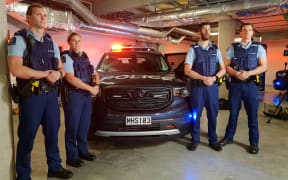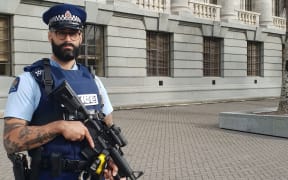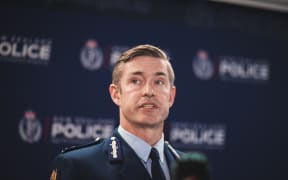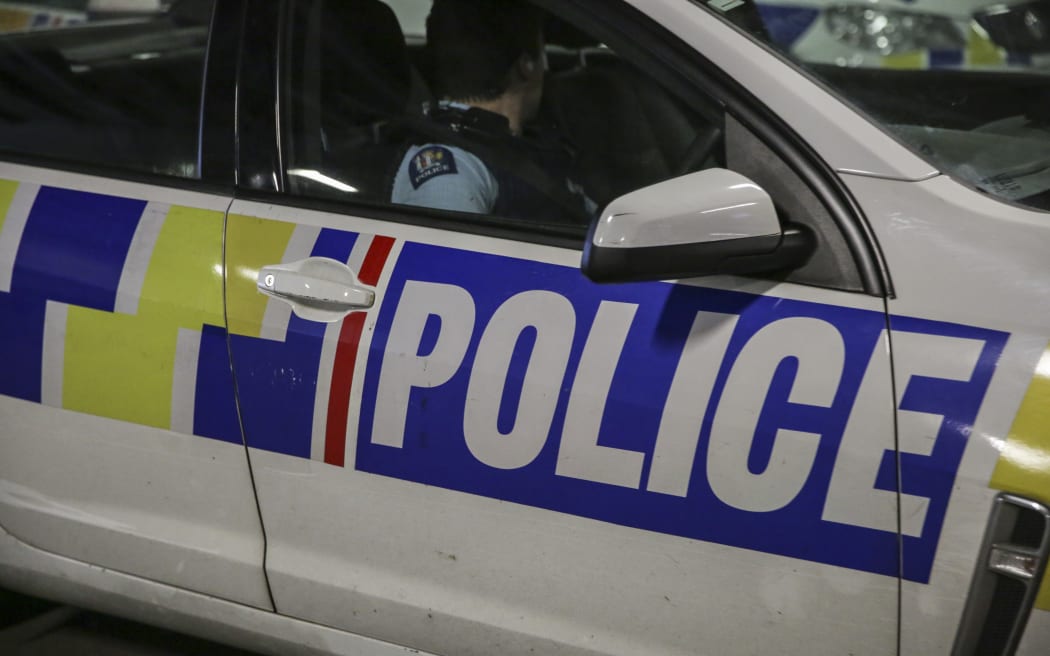
Tactical Response Model staff will not generally be armed. Photo: RNZ / Richard Tindiller
The government has decided to roll out the new police Tactical Response Model, previously trialled in four districts, nationwide.
The model was set up following the death of Constable Matthew Hunt in 2020. It has three components, including doubling tactical training of frontline staff from 3.5 to 7.5 days per year.
Other aspects included changes to deployments and the introduction of Offender Prevention and Tactical Dog teams - a two-member team of a dog handler plus a tactical operator with armed offender training.
The government allocated $15.5 million to develop the scheme in September 2021. Another $62.7m was invested last year to trial the scheme in four police districts - Northland, Counties Manukau, Waikato and Central.
The cost of rolling it out to the eight other districts is $122.5m.
Police Minister Ginny Andersen said Tactical Response Model staff would not generally be armed, nor would they be on community patrol, like the former Armed Response Teams.
They would wear the same uniforms and drive the same cars as other officers.
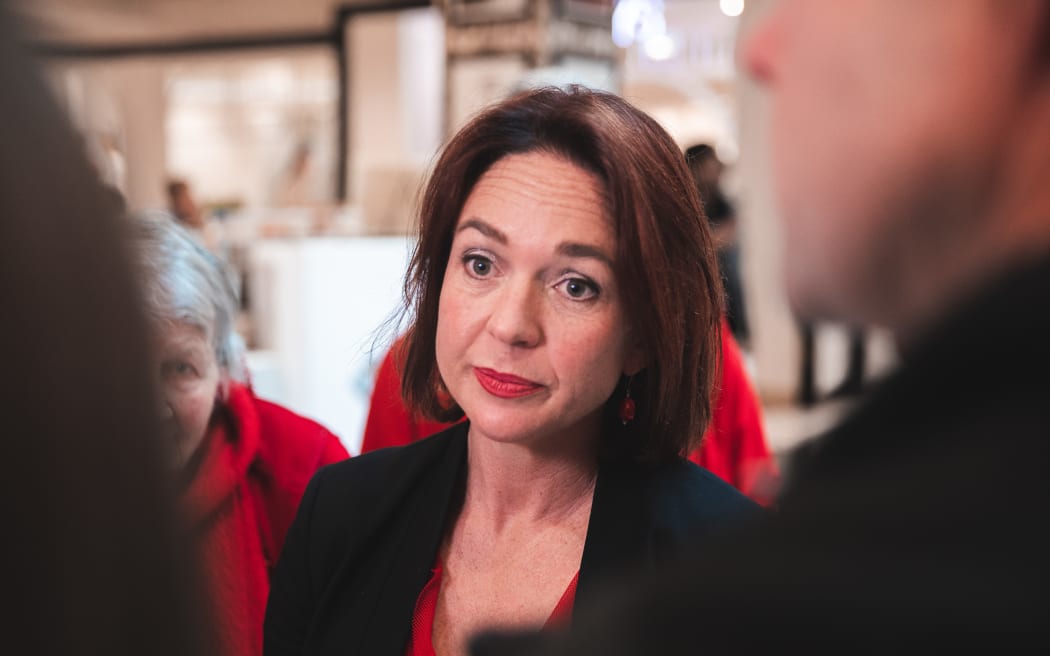
Ginny Andersen Photo: RNZ / Samuel Rillstone
Created in the wake of the Christchurch mosque shootings, Armed Response Teams were dumped because they "created fear" rather than making the public feel safer, just as critics expected.
"It's critical to give frontline police a higher level of protection without changing New Zealand's community policing approach - which we strongly believe is effective and appropriate for our country," Andersen said.
Police Commissioner Andrew Coster said the training included teaching an officer how to approach safely, how to call occupants back, and how to make judgements about when to call in support.
The overall model was focused on tactical communication and resolving risky situations with minimal force, Coster said.
"The model is getting $200m worth of investment in total and sees us with an additional 245 staff to implement so the model's well resourced, based on a good design, and I'm really confident about the impact.
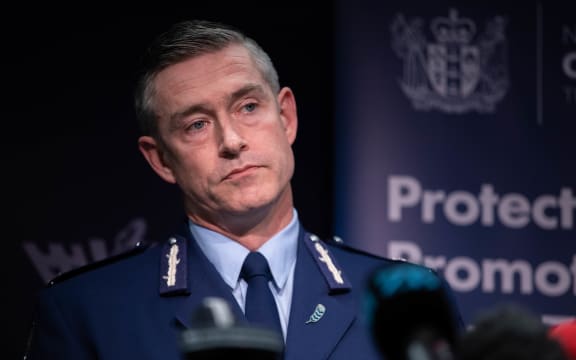
Andrew Coster Photo: RNZ / Angus Dreaver
"What we learned through the proof of concept is we ended up using less force and we had fewer complaints overall, so the model aims to use the minimum amount of force necessary to resolve the situation.
"It's also about the cognitive conditioning that when something happens out of the blue you're equipped to be able to deal with that," he said.
"The other aspect is in terms of proactively seeking after people who represent a risk to the community and a risk to the police ... if we can be proactive we reduce the likelihood of risky people coming into contact with police officers."
He said they were seeing a greater willingness by offenders to use firearms against police, and more instances when firearms needed to be used by police, and the new programme would help officers deal with that better.
Vehicle stops - including with multiple vehicles - were one of the riskiest situations faced by officers, he said.
"It's often an environment that we don't have full control over and we don't know who's in the vehicle and we don't know necessarily what they have in the vehicle."
He said the model was well resourced, based on a good design, and would continue to be evaluated.
"It's probably the most favourable evaluation I can think of, of an operational initiative. It really has been very successful and I'm excited about what it will do.
Andersen said the model - developed with significant input from frontline officers and received extensive community consultation, including with Māori, Pacific and ethnic community leaders - had shown "impressive results".
"Policing the public will see under the new model will be the same as what they see now, but those causing most harm in our communities will feel the difference because police will have an increasingly comprehensive suite of tools to work with."
"Front-line staff face high-risk situations daily as they increasingly respond to sophisticated organised crime, gang-violence and the availability of illegal firearms."
"The Tactical Response Model being launched today will make it safer for police on the job by applying smart policing to anticipate dangerous and high-risk situations before they arise."
Police were on track to hire 1800 new officers by the end of June, she said.
Prime Minister Chris Hipkins said he had seen first-hand the model in action when he was minister of police, and was proud of the government's investment in it.
"Every day we put police into harm's way, in the process of doing their jobs they have to make often very quick decisions in very volatile situations. The more we're investing in their training the safer they will be on the job and the better the decisions that they're going to make."
National's police spokesperson Mark Mitchell critised the government for taking too long to roll the model out nationwide.
"The roll out of the Tactical Response Model nationwide is now necessary due to Labour's soft approach on crime," Mitchell said.
The job of the response teams was now harder than it needed to be, he said.
Coster defends action on gangs
Coster said recent legislation was a great enhancement to police's ability to deal with gangs and organised crime, he said, including a boost to the ability to deal with cash and unexplained wealth.
"And of course the gang conflict provisions which are going to be incredibly helpful for us to manage situations such as the one we saw in South Auckland last year."
Police had strong internal oversight mechanisms to ensure there was no privacy concerns relating to new warrant powers, he said.
"Those powers are very tightly defined both in terms of the circumstances in which they might be accessed but also ... the judicial oversight of their use."
"These provisions are for a very specific set of circumstances which is gangs putting the public at risk by the nature of the conflict between them."
The level of gang-on-gang crime at the moment was in line with what police typically experienced and there were no current conflicts leading to especially raised levels of violence, he said.
"And I credit our focus on gangs, and particularly through operation cobalt, as a key driver of returning from what was a very elevated period to something that's now under the norm."
